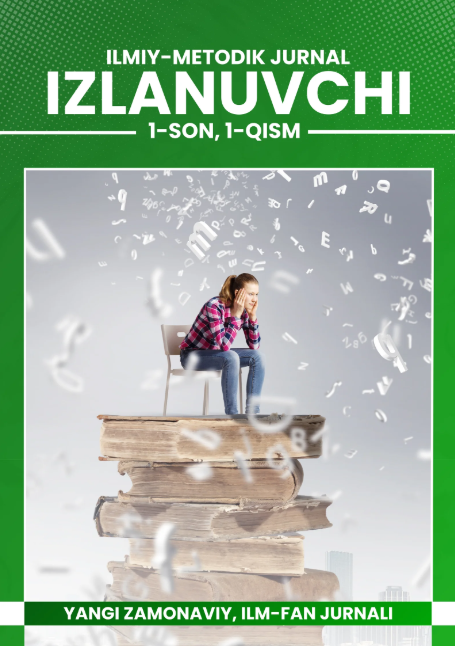Abstract
Ushbu maqolada oqova suvlarni tozalash jarayonida mikroorganizmlarni bartaraf etish metodlari tahlil qilinadi. Maqolada xlorlash, ultrabinafsha (UV) nurlar bilan dezinfeksiya, ozonlash va biologik usullar kabi zamonaviy texnologiyalarning samaradorligi va kamchiliklari ko‘rib chiqilgan. Shuningdek, mikroorganizmlarni yo‘q qilish jarayonining inson salomatligi va atrof-muhit xavfsizligiga ta’siri muhokama qilinadi.
References
Von Gunten, U. (2003). Ozonation of Drinking Water: Part I. Oxidation Kinetics and Product Formation. Water Research, 37(7), 1443–1467.
2. Bolton, J.R., & Linden, K.G. (2003). Standardization of Methods for Fluence (UV Dose) Determination in Bench-Scale UV Experiments. Journal of Environmental Engineering, 129(3), 209–215.
3. Richardson, S.D., & Ternes, T.A. (2018). Water Analysis: Emerging Contaminants and Advanced Treatment Methods. Environmental Science & Technology, 52(18), 10245–10265.
4. Sharma, S.K., & Khan, F.I. (2017). Advanced Oxidation Processes for Wastewater Treatment. Chemical Engineering Journal, 307, 1–18.
5. Ghernaout, D., & Ghernaout, B. (2012). Disinfection by Chlorination and its By-Products: A Review. Environmental Chemistry Letters, 10, 387–407.
6. Rizzo, L., et al. (2019). Advanced Wastewater Treatment Technologies for the Removal of Emerging Contaminants: A Review. Science of the Total Environment, 655, 790–817.
7. Khan, S.J., & Ongerth, J.E. (2004). UV Disinfection of Wastewater: A Review. Water Science and Technology, 50(1), 47–55.
8. WHO (2011). Guidelines for Water Quality Monitoring and Surveillance. World Health Organization, Geneva.
9. Fabregat, A., et al. (2020). Combination of Ozone and UV Treatment for Wastewater Reuse Applications. Journal of Environmental Management, 260, 110083.
10. Tchobanoglous, G., Stensel, H.D., & Tsuchihashi, R. (2014). Wastewater Engineering: Treatment and Resource Recovery, 5th Edition. McGraw-Hill Education.
